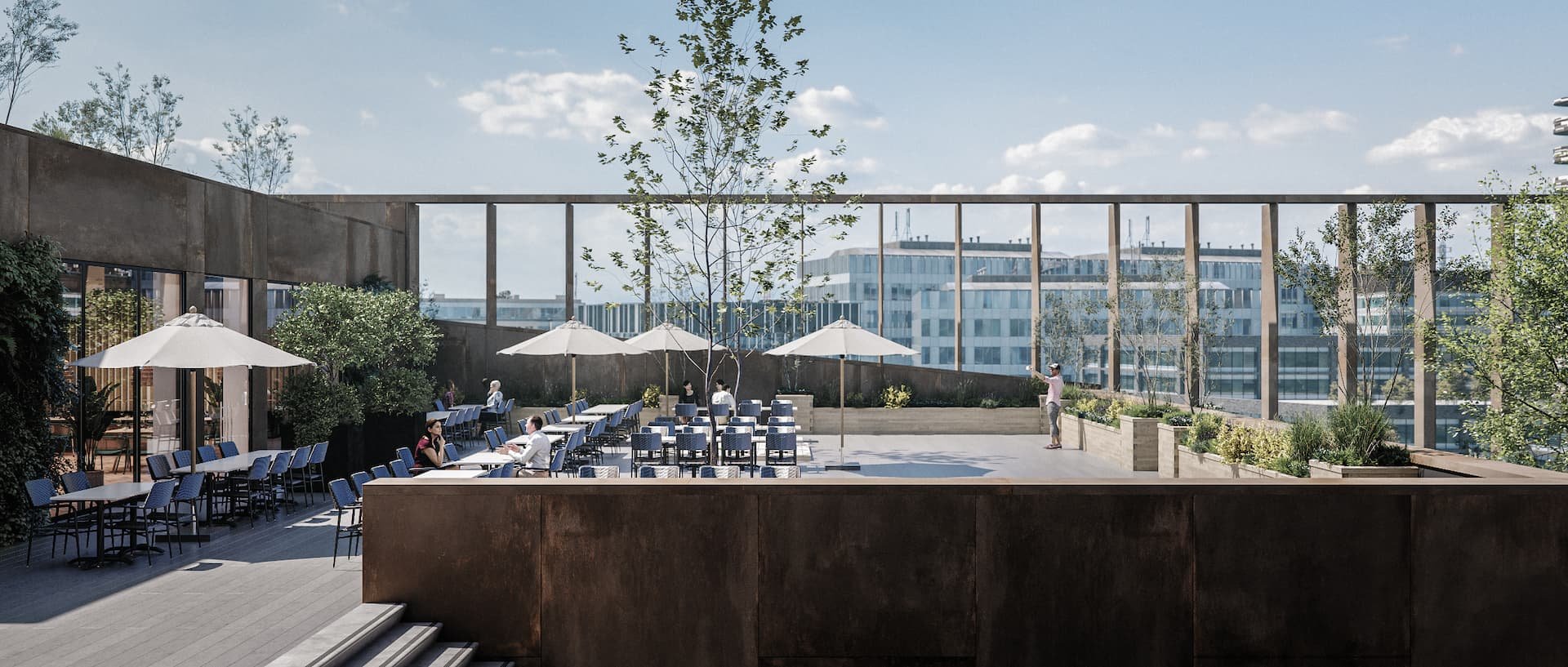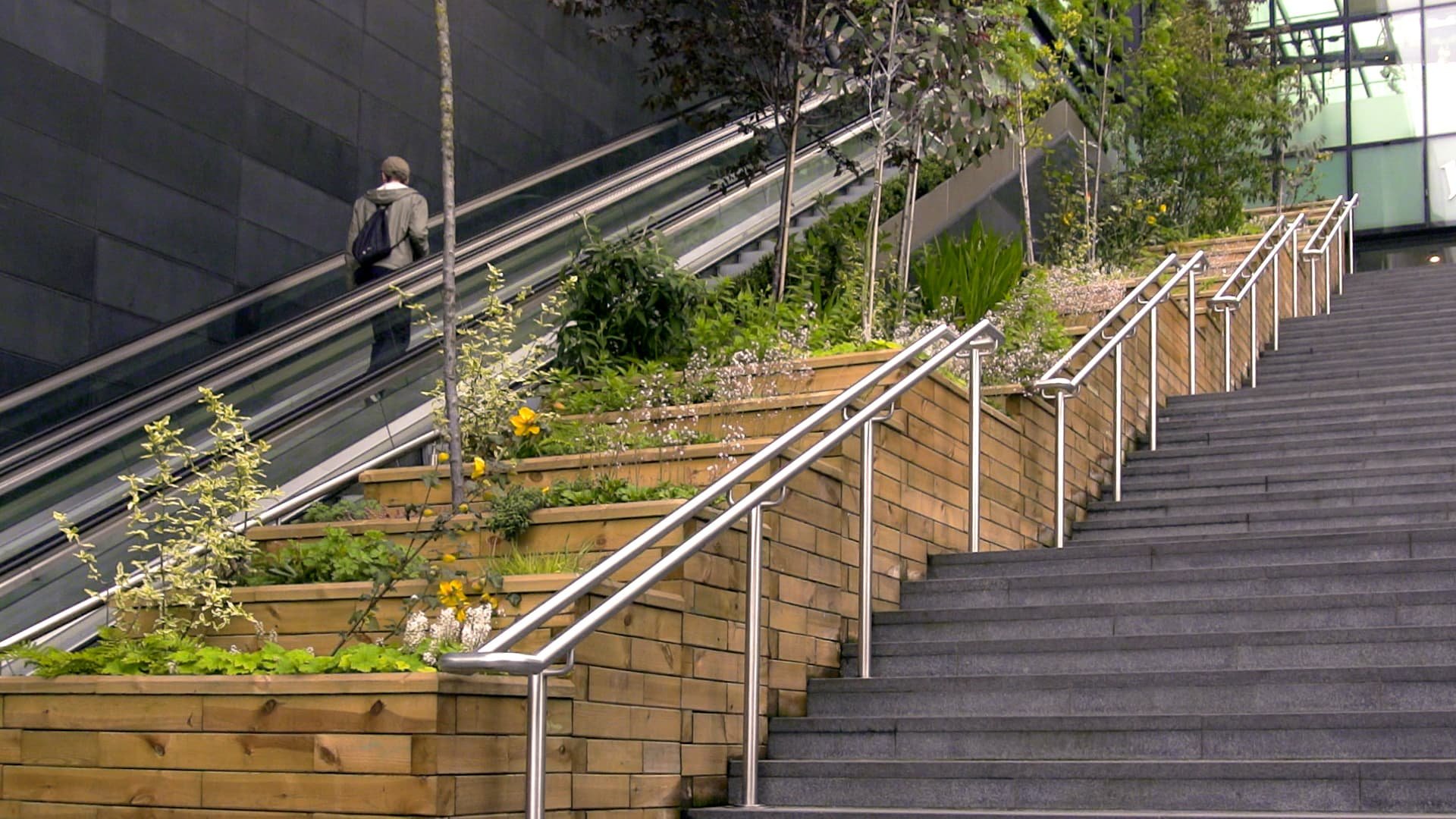Building nature
Biophilic design is proven to affect the way we feel from our mental health to our wellbeing by connecting us to nature into the built environment, it also provides a multitude of ecological benefits to cities and urban areas.
The biophilia concept was coined in the 70s and later defined in the 80s; it links our need as humans to engage with nature. Biophilic design within cityscapes successfully brings a slice of the natural world into the built environment providing a multitude of benefits.
Studies* have shown that areas that do not include natural elements can have a negative effect on the people using them, impacting their health and quality of life. The addition of nature in urban spaces is also vital in reducing the Urban Heat Island effect, which makes cities warmer due to the buildings being built in close proximity. This combined with the large volume of people and transport within them, and the energy these elements emit, contribute to poor air quality.
Prolific planting in cities and urban areas can help at both at ground level and higher up on roofs and the sides of buildings, not only will this contribute towards cleaning up the air and cooling the temperature, it reduces water-runoff thanks to the roots of plants and trees taking up water that would otherwise head straight to the drain and it also creates habitats for beneficial wildlife.
We know that towns and cities across the UK are making a conscious effort to include more greenery and planting within in new schemes, London for example, has more trees than people and research carried out by University College London estimates that the capital’s urban forests can store as much carbon as a tropical rainforest.
Architects in France took the biophilic concept to the next level, two recently approved designs have been inspired by biomimicry; Vincent Callebaut Architectures’ Semaphore has created a ‘green flex office’. The futuristic design aims to bring humans and nature together both in and outdoors featuring ‘urban vegetable gardens, greenhouses and orchards’. The Sophia Antipolis Technology Park in Antibes has a full covering of vegetation, making it difficult to distinguish where nature ends and the man-made structure begins
We worked with Westfield London to update the main entrance of the shopping centre with a planting solution that brought an element of nature to a heavily concreted area, using our modular system, made from natural FSC timber, we created a cascading planter design that integrated with the staircase perfectly. It was planted with trees and shrubs to compliment a living wall, which was installed on the side of the steps.
Installing WoodBlocX in roof gardens is made simple due to the components for our structures being small, making them easy to transport, we have provided planting and seating solutions for a number of roof gardens for Unite including Staniforth House, Angel Lane and Stratford One.
Whether it is ground level planting or roof gardens, our experience in creating bespoke planting solutions for cities and urban spaces is vast and our passion for the environment is evident through both our design and manufacturing process, click here to find out more.





